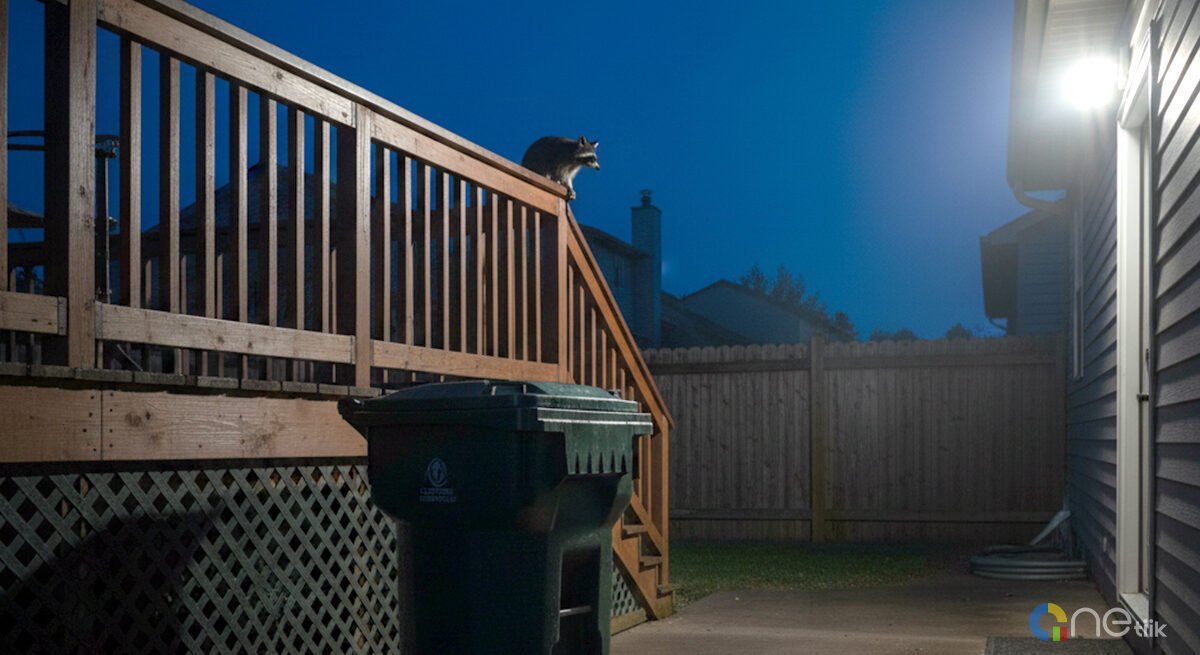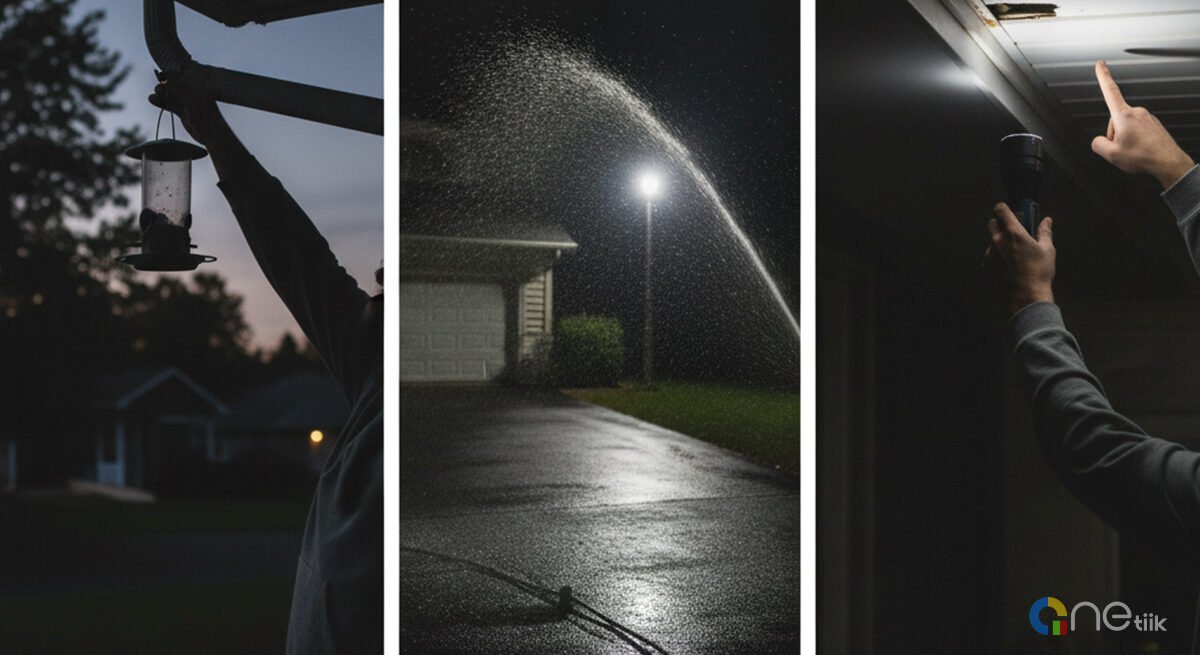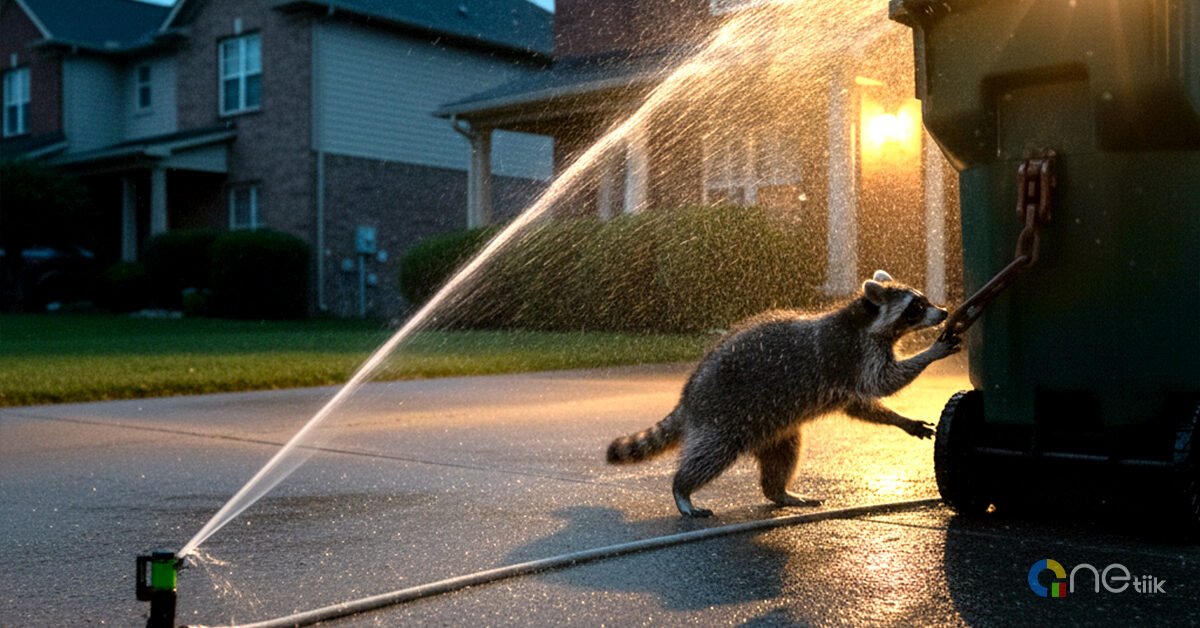Raccoons are smart, strong, and patient. The sure way to get rid of raccoons is to remove the rewards on your property and close every gap they can use to enter, while following clear safety steps for people and pets. This full guide covers “how to get rid of raccoons in your yard,” “how to get rid of raccoons in your backyard at night,” “how to get rid of raccoons in your attic,” “how to get rid of a raccoon under the house,” and other common situations, using humane, legal methods that last.
What “get rid of raccoons” really means

Aim for prevention, not just scaring them. Cut off food, water, and shelter. Then seal structures with hardware they cannot defeat.
Check local regulations before using traps or relocating animals. Many places restrict these methods or require licensed operators to use them. Humane exclusion and timing around young is the standard approach.
Why raccoons pick your place
Raccoons love easy food: open trash, spilled bird seed, pet bowls, fish ponds, fallen fruit, and compost without lids.
They seek safe shelter: uncapped chimneys, roof and soffit gaps, attic vents, crawlspaces, and under‑deck voids. If your property offers both food and shelter, they will return nightly.
Safety first: people and pets

Never handle raccoons. Avoid bites, scratches, and saliva. If exposure happens, wash thoroughly and seek medical care right away for evaluation.
Keep pets current on vaccination. Supervise pets outdoors at night. If a pet fights a raccoon, contact a veterinarian for guidance.
The three pillars that solve most problems
- Food: wildlife‑proof trash cans with locking lids, no overnight pet food, bring bird feeders in at dusk, sweep seed spills, and pick up fallen fruit daily.
- Water: cover small ponds at night when pressure is high, net koi features temporarily, fix hose and spigot leaks.
- Shelter: seal all gaps with 16‑gauge welded wire, metal flashing, and chimney caps; reinforce vents with steel covers.
The 48–72 hour quick‑start plan

- Night 1: remove pet food, lock or move trash indoors, bring feeders in, pick fruit off the ground, and wipe greasy grills.
- Night 2: place motion‑activated lights or sprinklers on approach paths; add a capsaicin‑based repellent at hot spots as a short‑term measure.
- Night 3: inspect the exterior for entry holes. Note roofline damage, uncapped chimneys, crawlspace openings, and under‑deck gaps. Schedule humane exclusion after you confirm the animals are out.
Yard basics: how to get rid of raccoons in your yard
- Lock trash, remove food and seed at dusk, and keep patios clean.
- Add motion sprinklers near the routes raccoons use. Rotate their position every few nights so raccoons do not adapt.
- After a week of sanitation, close shelter sites (under decks, crawlspaces). Without food or shelter, raccoons stop visiting.
Backyard at night: break the routine
- Before dusk: bring feeders and pet bowls in, empty grease trays, and secure compost with a tight lid.
- Run motion lights or sprinklers on timers to disrupt the patrol path. Use them for a week while you complete exclusion work.
Gardens and ponds
- Guard beds with welded wire or hardware cloth formed into an “L” and buried a few inches to stop digging at the edges.
- For fish ponds, add rock or plant cover, consider temporary netting, and reduce other food sources in the yard so ponds are not the only reward.
Accidental indoor visits: how to get rid of a raccoon in your house
- Keep a distance. Confine pets. Open a clear door to the outside and give the animal space to exit on its own.
- If it will not leave, call animal control or a licensed wildlife operator. Prevent repeats by upgrading pet doors to lockable or microchip‑enabled models.
Attic problems: how to get rid of raccoons in the attic
- Heavy footfalls and chittering often mean a mother and kits. Use gentle harassment at dusk: a bright light into the space, a radio playing talk or voices near the entry, and a small bowl of white vinegar below.
- Verify departure with a simple test: lightly tape a newspaper over the entry hole. When it remains undisturbed for two consecutive nights, seal it with welded wire and metal flashing. Avoid trapping animals inside.
Chimneys: never use smoke or fire
- Do not light a fire. Kits cannot climb and can die. Instead, use gentle harassment at dusk and wait for natural departure.
- After you are sure the chimney is empty, hire a certified sweep to clean debris and install an expanded‑metal chimney cap.
Under‑deck and crawlspace fixes: how to get rid of a raccoon under the house or under the deck
- Watch at dusk to confirm exit. Use a thin band of flour in front of the hole to read tracks. Do not seal if fresh tracks point inward.
- Install a welded‑wire skirt with an outward “L‑footer” buried under soil or gravel to stop digging. Seal all sides, corners, and transitions to the house. Clear woodpiles and debris near foundations.
What works best vs what to avoid
| Method | Best use | Why it helps | Limits |
|---|---|---|---|
| Exclusion barriers (mesh, flashing, chimney caps) | Attics, chimneys, under‑deck, vents | Permanent block against entry | Must install after animals leave; needs correct materials |
| Remove attractants (trash, feeders, pet food) | Yards, backyards at night | Ends the nightly reward loop | Must be consistent every night |
| Motion lights/sprinklers, capsaicin repellents | Short‑term pressure | Disrupts patrols while exclusion is installed | Habituation happens if food/shelter remains |
| Professional wildlife operator | Interiors, kits, risky access | Safe eviction, one‑way doors, legal compliance | Cost and scheduling; prevention is still needed |
Materials that stand up to raccoons
- 16‑gauge welded wire, 1×1 inch, galvanized when possible.
- Corrosion‑resistant metal flashing for soffits, roof edges, and chewed gaps.
- Expanded‑metal chimney cap and steel vent covers.
- Exterior screws with washers, masonry anchors where needed, and construction adhesive rated for outdoors.
Full exterior inspection checklist
- Roofline: lifted shingles, loose fascia, soffit returns, attic, and plumbing vents.
- Walls and foundations: dryer vents, crawlspace doors, utility penetrations, deck skirts, gaps where soil meets siding.
- Fences and gates: weak bottom edges, spots where raccoons squeeze or dig under.
Humane attic eviction: step by step
- Day 1: identify entry and listen for kit sounds. At dusk, light the cavity, place a radio near the entry, and use vinegar below to make the space uncomfortable.
- Day 2: check for quiet; tape a newspaper lightly over the hole. Repeat dusk harassment.
- Day 3–4: if the newspaper stays intact, clean droppings safely, or hire a pro, then install mesh and flashing. Replace flimsy plastic vents with steel covers.
Chimney: step by step
- Keep the damper shut. Use a radio and light to encourage departure at dusk.
- Confirm silence and no scratching for at least two nights.
- Have a certified sweep remove nesting material and install a properly sized chimney cap.
“How to get rid of raccoons naturally”
- “Natural” success comes from daily habits plus exclusion: remove food, reduce water, deny shelter.
- Use capsaicin repellents and motion devices as temporary aids, not as the final fix.
Legal and professional help
- Rules for trapping and relocation vary. If you are unsure, call local animal control or a licensed wildlife operator.
- Choose professional help for interiors with young, repeat entries, or unsafe roof access. Pros can use one‑way doors and reunion boxes to avoid orphaning kits.
Troubleshooting persistent visits
- Still seeing activity? Hunt for hidden food: unsecured compost, spilled seed, feed bags in sheds, grill grease, fruit under trees.
- Hearing noises after sealing? Stop and reassess at dusk. Do not trap animals inside. Reopen if needed, verify exit, then reseal correctly.
Seasonal timing tips
- Late winter to spring is denning season. Expect higher chances of mothers with kits in attics or chimneys. Time exclusion with care.
- Wet seasons soften lawns and raise grub activity. Combine lawn pest control with attractant removal to protect new sod.
Signs it is raccoons
- Loud thumps rather than light scurrying, hand‑shaped tracks, greasy rub marks near entries, and distinct latrine sites.
- Daytime presence alone is not proof of illness; look for staggering, paralysis, or abnormal aggression to judge risk. Keep a distance and call the authorities if you see those signs.
Scenario mini‑guides using your target phrases
- How to get rid of raccoons in your yard / in my yard / in the yard: remove food, lock trash, bring feeders in at dusk, use motion sprinklers, and seal under‑deck and crawlspace openings.
- How to get rid of raccoons in the yard: confirm species with tracks or latrine, clean attractants, and schedule fence or deck‑skirt reinforcement.
- How to get rid of raccoons naturally: daily sanitation plus exclusion with welded wire, chimney caps, and steel vent covers.
- How to get rid of raccoons in your attic / in the attic / in my attic: dusk harassment, verify exit with a newspaper test, then seal with mesh and flashing.
- How to get rid of a raccoon under the house / under house / under the house / under deck: confirm exit, install a welded‑wire skirt with a buried L‑footer, and keep woodpiles away from foundations.
- How to get rid of raccoons under the deck and under the house: seal all sides, bury mesh a few inches, and monitor for new digging for two weeks.
- How to get rid of raccoons from yard / from your yard: sanitation every night, short‑term motion devices, then permanent closure of all shelter spots.
- Raccoon how to get rid of: focus on exclusion as the final step after removing food and water; hire a pro for interiors or risky roofs.
Supplies you will likely need
| Category | Items |
|---|---|
| Barriers | 16‑gauge welded wire (1×1 in), metal flashing, chimney cap, steel vent covers |
| Fastening | Exterior screws, washers, masonry anchors, and construction adhesive |
| Tools | Drill/driver, tin snips, pry bar, headlamp, ladder with tie‑off |
| Deterrents | Motion‑activated lights or sprinklers, capsaicin repellent (spot use) |
| Safety | Thick gloves, eye protection, long sleeves, N95 for dusty areas, heavy‑duty bags, disinfectant |
Cost and time planning
- Weekend 1: sanitation and motion devices; survey entries; begin under‑deck or crawlspace prep.
- Weekdays: order hardware and caps; schedule a pro if chimneys or high roof work are involved.
- Weekend 2: confirm exit, then install mesh, flashing, and caps; replace weak vents and repair soffits.
- Ongoing: keep trash locked, remove food nightly, and do a quick perimeter check weekly for one month.
When to stop DIY
- If young are present, if the entry is high or unsafe, or if an animal is sick or aggressive, call a licensed operator or animal control.
- Pros can use one‑way doors and safe reunion methods. After removal, they will seal secondary weak points to prevent new entries.
Editorial checklist before publishing on your site
- Put a clear “seek medical care after bites or scratches” notice near the top and bottom of the article.
- Include an early warning not to light fires to drive raccoons from chimneys and not to seal entries until you are sure all animals have left.
- Use a 16:9 featured image showing proper exclusion (for example, a chimney cap or deck skirt) to match your image workflow.
- Add internal links to companion guides: bird‑feeder management, pet‑door upgrades, attic repairs, lawn grub control.
Final quick‑reference table
| Problem phrase (SEO) | Immediate actions | Permanent fix |
|---|---|---|
| How to get rid of raccoons in your yard / in my yard / in the yard | Remove food at dusk, lock trash, and add motion sprinklers | Seal under‑deck and crawlspace with welded wire; keep sanitation nightly |
| How to get rid of raccoons in your attic / in the attic / in my attic | Use dusk light‑sound‑vinegar; verify exit | Seal entry with welded wire and flashing; install steel vent covers |
| How to get rid of raccoons in the backyard at night | Bring in feeders and pet bowls; rotate motion sprinklers | Close shelter spots; keep trash indoors or latched |
| How to get rid of a raccoon under the house / under house / under the house / under the deck | Confirm exit with tracks or dusk watch | Install welded‑wire skirt with buried L‑footer; clear woodpiles |
| How to naturally get rid of raccoons | Remove food, water, shelter; short‑term capsaicin and motion | Exclusion with metal and welded wire; fit a chimney cap |
| Raccoon: How to get rid of | Sanitation plus motion devices right away | Professional help for interiors; full exclusion afterward |
Closing note
The reliable plan is simple and steady: take away the food and water rewards, remove shelter, and then seal every opening with welded wire, flashing, and a good chimney cap. Use motion devices and capsaicin only as short‑term pressure while you install permanent hardware. Keep pets vaccinated, keep people away from wildlife, and call a licensed pro for interiors, kits, or risky access. Follow these steps, and you can get rid of raccoons in your yard, attic, chimney, under the house, and in your backyard at night—humanely and for good.
FAQs
What is the best way to get rid of raccoons in your yard?
Remove the rewards and close the shelter. Lock trash cans, bring bird feeders and pet bowls in at night, clean seed and fruit on the ground, and use motion sprinklers for a week while you seal under‑deck or crawlspace gaps. This breaks the nightly routine and prevents re‑entry.
How to get rid of raccoons in the backyard at night fast?
Before dusk, remove all food, secure trash indoors or use latching lids, and switch on motion lights or sprinklers along approach paths. Keep this for several nights, then install permanent exclusion at decks, crawlspaces, and fence gaps.
How to get rid of raccoons in your attic humanely?
Work at dusk. Use light and sound in the attic to make the space uncomfortable, then verify they left with a newspaper or tape test over the hole. Once quiet for 48 hours, seal the entry using welded wire and metal flashing. If babies (kits) are present, wait until they are mobile or hire a pro for one‑way door and reunion methods.
Can I light a fire to chase raccoons out of the chimney?
No. Fires can kill trapped young and create a serious hazard. Instead, encourage departure at dusk with light/sound, confirm the chimney is empty, then have it cleaned and capped.
How to get rid of a raccoon under the house or under deck?
Watch at dusk to confirm exit. Install a welded‑wire skirt around the deck or foundation with an outward, buried L‑footer to stop digging. Seal all sides only after you’re certain the space is empty.
What does “how to naturally get rid of raccoons” mean in practice?
It means removing food, water, and shelter so visits are no longer rewarding. Use capsaicin‑based repellents and motion devices for short‑term pressure, but rely on exclusion (mesh, flashing, chimney caps) for the permanent fix.
How do I know it’s raccoons and not squirrels or rats?
Raccoons leave hand‑shaped prints, create latrine areas, and make heavier footprints than squirrels. Look for greasy rub marks by roof holes and vents, and listen for chittering rather than light scampering.
How do I know it’s raccoons and not squirrels or rats?
Raccoons leave hand‑shaped prints, create latrine areas, and make heavier footprints than squirrels. Look for greasy rub marks by roof holes and vents, and listen for chittering rather than light scampering.
Is seeing a raccoon during the day always a rabies sign?
Not always. Daytime activity can happen. Concerning signs include staggering, paralysis, vocal aggression, or a raccoon approaching people or pets. Keep a distance and contact local animal control if the behavior looks abnormal.
Do repellents alone get rid of raccoons?
No. Repellents and motion devices help for a few nights, but raccoons adapt. They work only as a bridge while you remove food and install exclusion.
How to get rid of raccoons from your yard without traps?
Use a strict sanitation routine, motion sprinklers at approach routes, and then close all den sites with welded wire and flashing. Most problems resolve once the property stops offering food and shelter.
What materials actually stop raccoons?
Use 16‑gauge, 1×1‑inch welded wire, galvanized if possible; corrosion‑resistant metal flashing; steel vent covers; and a proper expanded‑metal chimney cap. Lightweight plastic and foam patches fail.
How long will it take to clear raccoons from my yard?
With consistent sanitation and motion deterrents, nighttime visits usually drop in a few days. After sealing shelter sites, most properties stay quiet. Expect a weekend of work for inspection and temporary measures, and another session for permanent exclusion.
What should I do if a raccoon is inside my house?
Keep pets away, open one clear door to the outside, dim other rooms, and give it space to leave. If it won’t exit, call local animal control. Afterward, upgrade pet doors and continue strict food control.
How to get rid of raccoons in the attic if I suspect babies?
Do not seal immediately. Use dusk harassment to encourage the mother to relocate the kits, verify silence for at least two nights, then seal. If unsure, use a licensed operator who can install a one‑way door and reunite kits safely.
Will raccoons come back after removal?
They return if rewards remain. Keep trash secured, remove food nightly, and maintain barriers. Once the property stays “boring” and sealed, repeat visits usually stop.
Are pet doors a problem?
Yes. Raccoons learn to use them. Replace with lockable or microchip‑enabled doors and close them at night.
Do raccoons climb smooth walls or downspouts?
They are excellent climbers and can use downspouts, fence posts, and trellises as ladders. Sleeve downspouts and trim vegetation near roof edges to remove “climb paths.”

















